
By Anil Söyünmez
WhatsApp marketing
wiki
,Guides
What's a WhatsApp newsletter? Is it the same as an email newsletter? Should your business be sending them? And if so, how? Here's everything you need to know.
When businesses first started using WhatsApp in 2018, it was mostly seen as a customer support tool.
Very quickly though, brands realized that WhatsApp's biggest revenue potential lay in another team – marketing. And in particular, in the use case of WhatsApp newsletters.
Here's what a WhatsApp newsletter is, why more and more brands are sending them in 2023, and how to get set up quickly so you can start sending them.
We believe "traffic" will exponentially move from the streets and the browser into chat apps. cCom is fast becoming the 3rd big pillar of commerce
What's a WhatsApp newsletter?
A WhatsApp newsletter is a promotional WhatsApp message sent from a brand to its customers. Examples of WhatsApp newsletters are:
- Special offers
- Exclusive discounts
- Product launches
- Competitions
- Seasonal campaigns
- Personalized messages like birthday greetings
Once a customer has agreed to receiving these messages, a brand can send them periodically until a person decides to opt out (usually by sending a WhatsApp message saying "STOP" to the business).
What's the difference between WhatsApp and email newsletters?
Most people are familiar with email newsletters. They've been around for 15 years and still remain a key source of revenue for most consumer brands.
However, not so many people are yet familiar with WhatsApp newsletters. They're shorter and snappier than email newsletters, containing only 1 message, and feel very personal.
The key differences between WhatsApp and email newsletters are:
| WhatsApp newsletter | Email newsletter | |
|
Content |
Short, snappy, 1 topic per newsletter | Longer, more text, more images, may cover many different topics in 1 newsletter |
|
Subject line |
🙅 None (but you can add a header) | 🙋 Has one |
|
Pre-header |
🙅 None | 🙋 Has one |
| Notification | Appears on phone homescreen, showing body text | May not be shown on phone (often switched off), will show subject line |
| Metrics |
Return on campaign spend Click-through rate Opt-in rate Opt-out rate |
Click-through rate Unsubscribe rate |
| Call to action | Usually only be 1 | Usually several |
| Frequency | Best practice is to send no more than 1-2 per month | Sometimes sent 3-4 times per week |
| Segmentation | Rich, using tags added automatically based on order behavior, previous WhatsApp conversations, preferences, location, name and more | Possible but many email marketers don't learn enough about customer to add tags, usually limited to "Male/female" and previous response behavior |
| Attachments | Photos, gifs, voice messages, pdfs | Photos, gifs, videos, pdfs |
| Attachment visibility | Shown visually above text, easy to see | Usually attached at the bottom of the email, often missed |
| Unsubscribe | Up to brand to tell customers how to opt out of a WhatsApp newsletter. Usually "Send STOP" (can be added as footer in every message (in charles platform) | Unsubscribe at the bottom of each email, often very small and hard to find |
| GDPR regulations | Apply in the EU, just as any marketing channel where you collect data (click for more on WhatsApp and GDPR) | Apply in the EU, just as any marketing channel where you collect data |
| Automation | Entire conversational flows can be automated, rich functionality thanks to the WhatsApp API (see Journeys to see how charles does it) | No great degree of 2-way automation, but can set up automated flows, like welcome flows, post-purchase flows |
| Interaction | Highly interactive: can add buttons, lists and automated replies triggered by keywords and allow customers to write replies | Little interactivity. Can click on links to visit website or in-app links and send replies (unless sent from a noreply@ email address) |
For marketing departments, the differences in key performance indicators (KPIs) are particularly interesting. For example, WhatsApp newsletters enjoy very high open rates (typically 85-95%, compared to email's average of around 20%). See our top 5 WhatsApp benchmarks here.
Will WhatsApp newsletters replace email newsletters?
No. Some companies herald WhatsApp marketing as the next big thing that will cause the death of email. We disagree.
There's still a place for email newsletters, and we believe this will continue. In fact, after a slump, email is growing more popular as a marketing channel again in recent years.
77% of marketers have seen an increase in email engagement over the last 12 months
The Ultimate List of Email Marketing Stats for 2023, Hubspot
The new power couple: email and WhatsApp
The smartest brands send both email and WhatsApp newsletters. To do this successfully they create a clear marketing strategy to state different purposes for email and WhatsApp.
For example, you might send WhatsApp newsletters for exclusive pre-access to a new product (like Bears with Benefits), or to announce a Black Friday offer.
Then you can use your email newsletters to announce your new season's collection in its full glory, or show sales highlights, with images and links to all your key products.
There are many benefits to both newsletter types. Here's a summary of some of them:
|
Whatsapp newsletter benefits |
Email newsletter benefits |
|
Highly personalized |
Most-used medium |
|
High open rates (> 90%) |
Large audiences |
|
Ingrained in daily habits |
Low costs |
|
Interactive formats |
Lots of customer data |
|
Casual, friendly feeling |
A little detached and less intrusive (works well for B2B) |
|
2-way conversations, can encourage responses from customers |
An informational channel, can be use for long reads |
WhatsApp newsletters in the app vs the API
The key difference between WhatsApp newsletters in the WhatsApp Business app compared to the WhatsApp API (now WhatsApp Business Platform) is mostly the naming.
In the app, they're called "WhatsApp broadcasts" whereas in the API, they're called "WhatsApp campaigns."
WhatsApp newsletters in the app: broadcasts
These are WhatsApp newsletters sent with the WhatsApp Business app. They're sent by small businesses or individual business owners, and can be sent to a maximum of 256 contacts.
There's a low degree of automation and interaction, although you can add "quick replies" so subscribers can click on buttons.
See our wiki article on WhatsApp broadcasts here.
WhatsApp newsletters in the API: campaigns
These are WhatsApp newsletters sent through the WhatsApp Business Platform (API). They're sent by medium to large companies to 100,000s of customers. To do this, you need a WhatsApp Business Solution Provider (BSP) who will provide WhatsApp software and expertise.
There's a high degree of automation, segmentation and interaction possible with the API, which helps businesses get very targeted and creative in WhatsApp.
See our wiki article on 4 WhatsApp campaign examples here.
The benefits of sending newsletters via WhatsApp
There are many benefits of sending WhatsApp newsletters. These include:
- Get noticed: our clients see open rates of around 90% – and this isn't a one off, this is every time they send a WhatsApp newsletter.
-
Never be spam: WhatsApp newsletters will never land in a spam folder, because there isn't one. This doesn't mean you should spam people though. In fact, it's the opposite, you'll be blocked very quickly on WhatsApp if you overstep the mark.
- Measure responses accurately: no other marketing or eCommerce tool gives you such rich analytics. Not even social media or search engines.
- Message in real time: most customers open notifications instantly and check WhatsApp more regularly than email.
- Enjoy an audience that wants to hear from you: the fact that customers have to sign up for the newsletter with a private phone number means they actually want the information. As long as they feel like they're receiving some sort of benefit or incentive, they will be happy to be on your mailing list.
- Boost customer lifetime value (CLV): 69% of consumers say that the ability to communicate directly with a brand they’re purchasing from would motivate them to join their online customer community. Which makes WhatsApp newsletters the perfect place to build community and, in turn, loyalty.
- Reach the most people: WhatsApp is the most popular messaging tool in the world, with over 2 billion users interacting on this platform. It's very likely your customers have the app installed. Check your country's WhatsApp usage here.
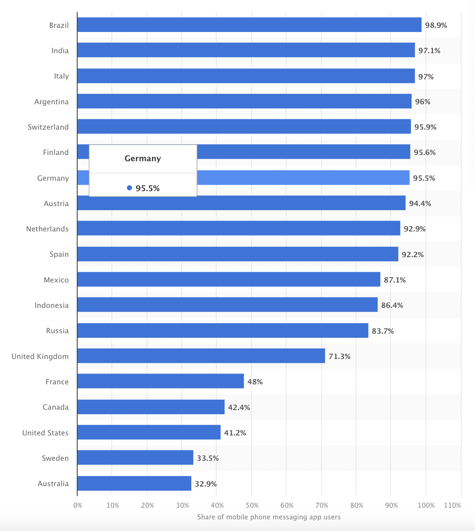
WhatsApp use across the world – showing our key markets German (7th) and Italy (3rd) as among WhatsApp's top global markets Source: Statista
There are many more benefits to using WhatsApp Business to send promotional messages to customers. See more here.
3 WhatsApp newsletter examples
There are many types of WhatsApp newsletter. Whether you want to treat your most loyal shoppers, reach a larger audience, or simply use a more visual way to get in front of your target audience, WhatsApp newsletters can help brands meet many business goals.
Here are 3 ways our clients are using WhatsApp newsletters:
1. Exclusive pre-access: increase customer lifetime value (CLV)
Our client, energy drink brand HOLY Energy used WhatsApp newsletters to drive higher customer engagement ahead of the launch of its new drink flavor. The brand:
- Announced the upcoming launch via various social media channels
- Enticed customers to sign up to receive an early access code via WhatsApp so they could shop the product exclusively
- Directed WhatsApp subscribers to a dedicated landing page where they could enter the code to access the new product
The results:
- A record 10x higher revenue on launch day
- The brand doubled its subscriber list
Read the full HOLY Energy story
2. Pre-purchase assistance: cut the sales cycle
Building a strong community shouldn’t begin after a customer has made a purchase. In fact, it should begin the moment they show any interest in your brand. By addressing a customer’s questions and concerns on channels they’re most likely to interact in, you can shorten the sales cycle and turn them into loyal customers faster.
For example, a bed at premium furniture company woodboom typically costs around €1,500, and their customers make about 7 inquiries before they commit to making a purchase - resulting in a 2-4 week sales cycle. The brand wanted to combine their customer-centric style of communication and the conversion power of WhatsApp to deliver a personal experience that also shortens this sales cycle.
Woodboom implemented “Chat-ins:” buttons, bubbles and articles that lead customers into the chat.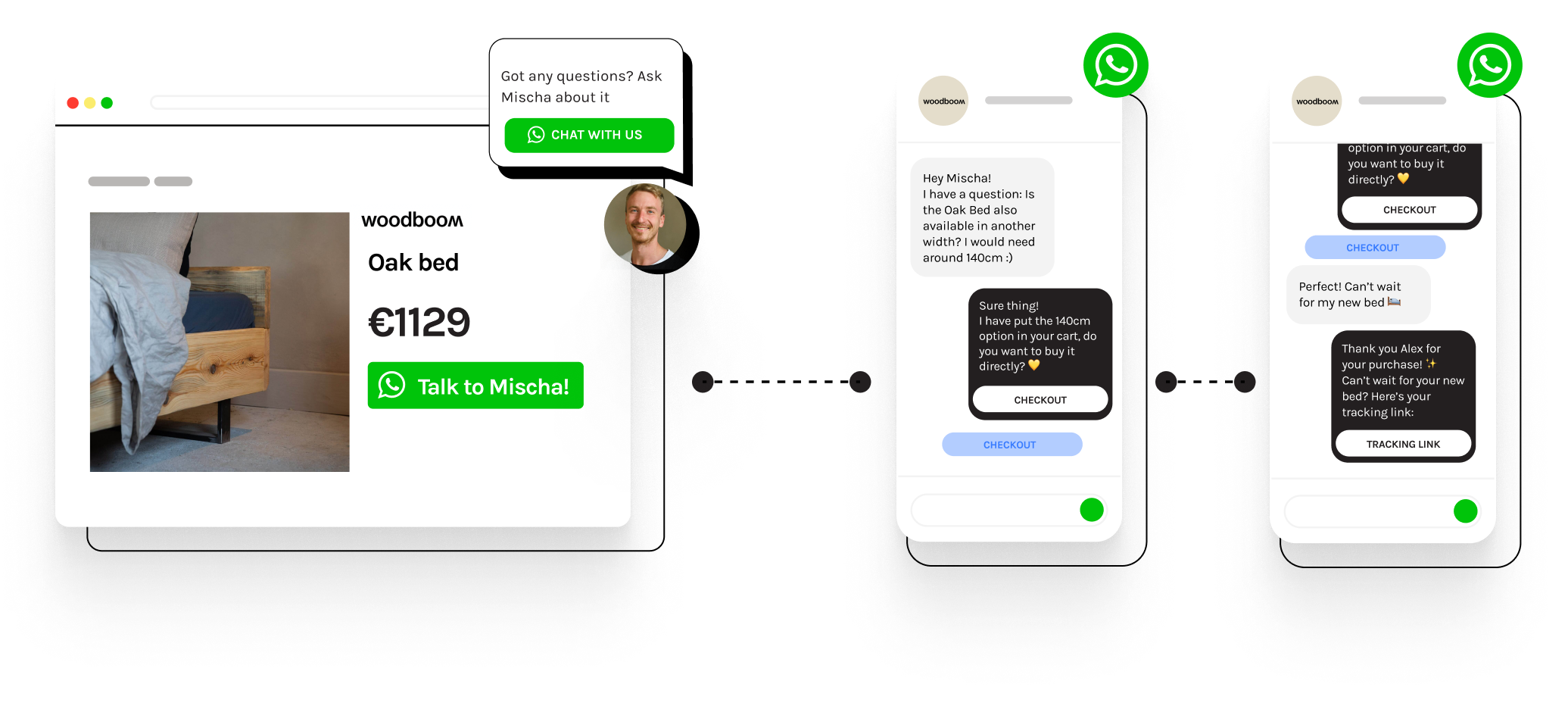
While customers engaged with woodboom via WhatsApp, they also had easy access to checkout buttons to keep their purchase top of mind and remove any barriers to purchase.
By engaging their customers via WhatsApp newsletters, they were able to reduce their sales cycle to 2-4 days, generate 70% of sales via the messaging app. and stay true to their customer-centric roots.
3. Exit intent popups: turn website visitors into WhatsApp subscribers
Whether it’s due to indecision or just plain distraction, sometimes your customer needs a little extra nudge to take action.
One of the more popular ways to engage customers before they leave a website is through an “exit-intent”-popup: a popup triggered if a customer is about to leave the website or is taking too long to make a purchase decision. These pop-ups often contain special discounts, prompting the customer to leave their email address to receive the discount in their inbox and also stay connected to your brand.
Because exit intent pop-ups are known to ‘save’ between 10-15% of lost customers, they’re an effective addition to your WhatsApp engagement efforts.
Underwear brand SNOCKS is a perfect example of a brand that turns abandonment into opportunity. To test whether indecisive customers were more receptive to receiving offers via WhatsApp newsletters vs email newsletters, the brand ran an A/B-Test using two exit-intent popups:
- The first one offers a 10% discount if customers sign up for the WhatsApp newsletter
- The second one offers a similar deal to sign up for email updates
How to start a WhatsApp newsletter
To start a WhatsApp newsletter you need to:
- Get software: partner with a WhatsApp Business Solution Provider (BSP) like charles
- Send campaigns: your BSP will help you learn how to best create campaigns – frequency, creativity, segmentation and more. Pressing send is the most satisfying part. Then you can watch the sales coming in in real time
- Optimize: analytics in your WhatsApp platform will help you gauge each newsletter's success so you can continue optimizing and boosting results
WhatsApp newsletter best practice advice
We've put together rich best practice advice, with the help of our Client Success team. These will help set you up for greater success and profitability in WhatsApp:
- How to format WhatsApp newsletters to catch attention
- How to track success of WhatsApp newsletters
- 5 secrets of WhatsApp marketing success for Black Friday
- 5 creative WhatsApp newsletter ideas
These other resources are also helpful when setting up a WhatsApp newsletter:
How to choose WhatsApp newsletter software
To send WhatsApp newsletters through the WhatsApp API, you'll need software. These platforms are provided by WhatsApp Business Solution Providers (BSPs). We recommend using this as your checklist to ensure a high-quality provider that will set you up for success:
- Leads with marketing functionality, as well as sales and support 💰
- Advanced audience segmentation 🙋🙋♀️🙋♂️
- GDPR compliance 🚓
- Automation 🏃♂️
- Easy integrations ⛓
- Chat bubbles 💬
- Human focus 🫶
- Easy-to-use interface 🪁
- Fair pricing 💶
- Stability 💪
- Ongoing support 🏋️
See more in our article: How to choose WhatsApp software.
Time to add WhatsApp newsletters to your marketing mix
The golden rule of media and marketing is that no new medium will ever replace an old one entirely.
Think of newspapers, radio, TV, the internet and now apps. They all coexist.
WhatsApp newsletters and WhatsApp marketing is here as part of your mix, and unlikely to replace any of your current marketing channels.
We've explained what WhatsApp newsletters are and why you should use them, but so far most businesses in Europe either aren't using them, or aren't getting the most out of them.
We're here to change that. In Asia and Latin America, conversational commerce is already huge for consumer brands. Our mission is to bring this success to Europe, so consumer brands here can experience the revenue potential of WhatsApp.
Want to explore your own business' potential? Talk to us.
Authentic conversations have the power to start relationships with greater trust and loyalty, and happier customers
Artjem, co-CEO and founder, charles
How to get your WhatsApp newsletter started with charles
Reaching your customers where their friends are has never been easier.
WhatsApp newsletters are the new way to reach new and current customers, build a strong community of brand advocates and convert shoppers faster than traditional email marketing.
And the best part: getting started is as simple as staying connected. The team at charles makes it easy for brands to get started with WhatsApp newsletters: from creating seamless automated opt-in flows, to clear performance analytics that allow you to track your WhatsApp newsletter growth, to assistance with WhatsApp newsletter visuals to align strategy with brand aesthetic.
Book a demo with our friendly Sales team and you can start reaping the rewards of WhatsApp newsletters in no time.
FAQs about WhatsApp newsletters
What is a WhatsApp newsletter?
A WhatsApp newsletter is a promotional WhatsApp message brands can send through WhatsApp Business to their customers. It's similar to an email newsletter, but shorter, covering only 1 topic, and should be sent at a lower frequency (to avoid being seen as spam).
WhatsApp newsletters are a direct, personal way to reach a relevant, interested audience and build long-term relationships.
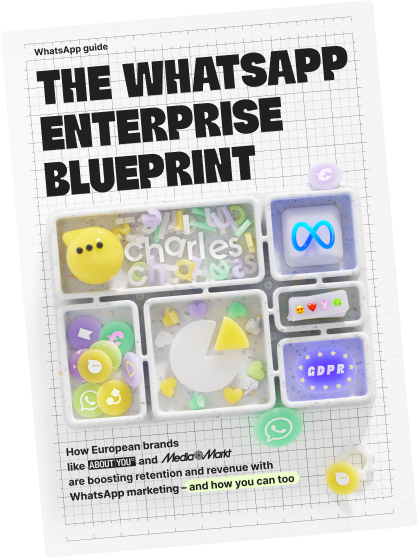
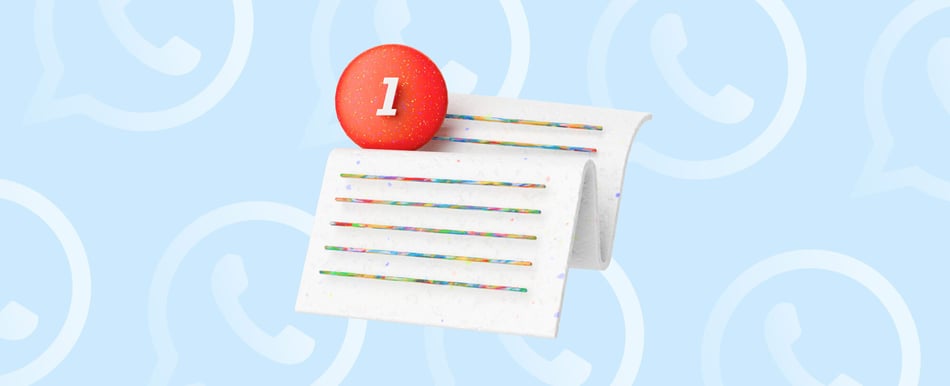
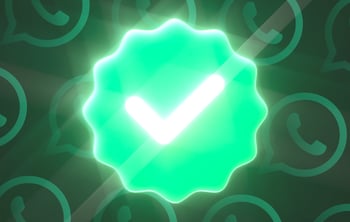
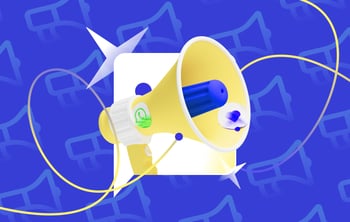
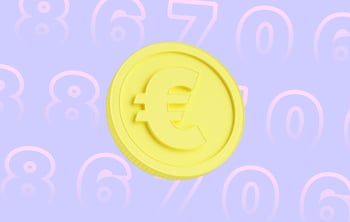
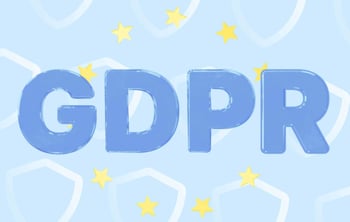
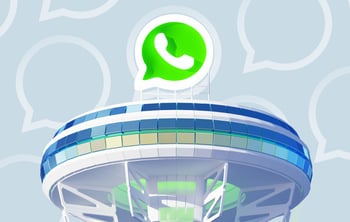
![WhatsApp marketing 101: your guide [+10 WhatsApp campaign examples]](https://www.hello-charles.com/hs-fs/hubfs/WA%20marketing%20preview%20%281%29.jpg?width=350&height=222&name=WA%20marketing%20preview%20%281%29.jpg)